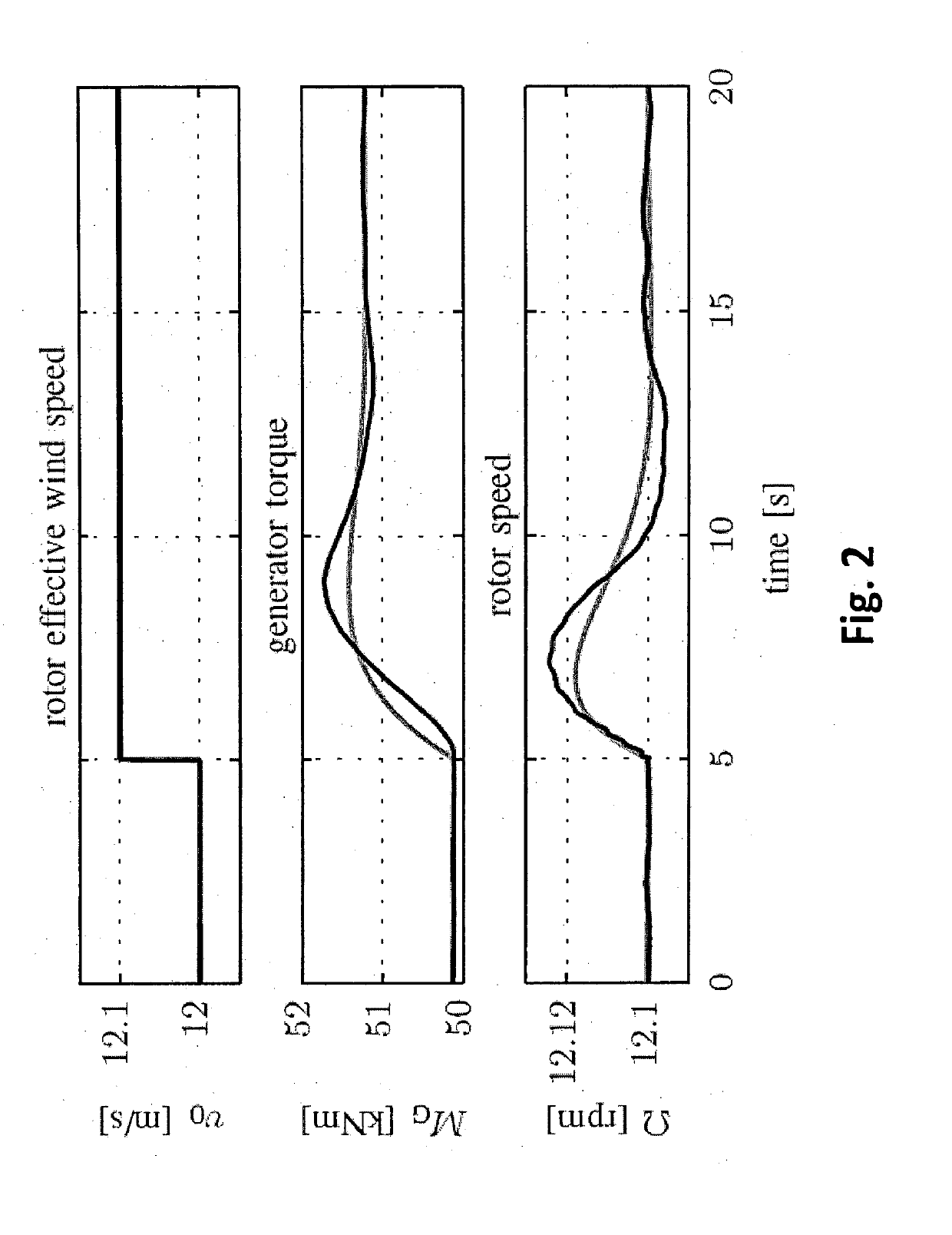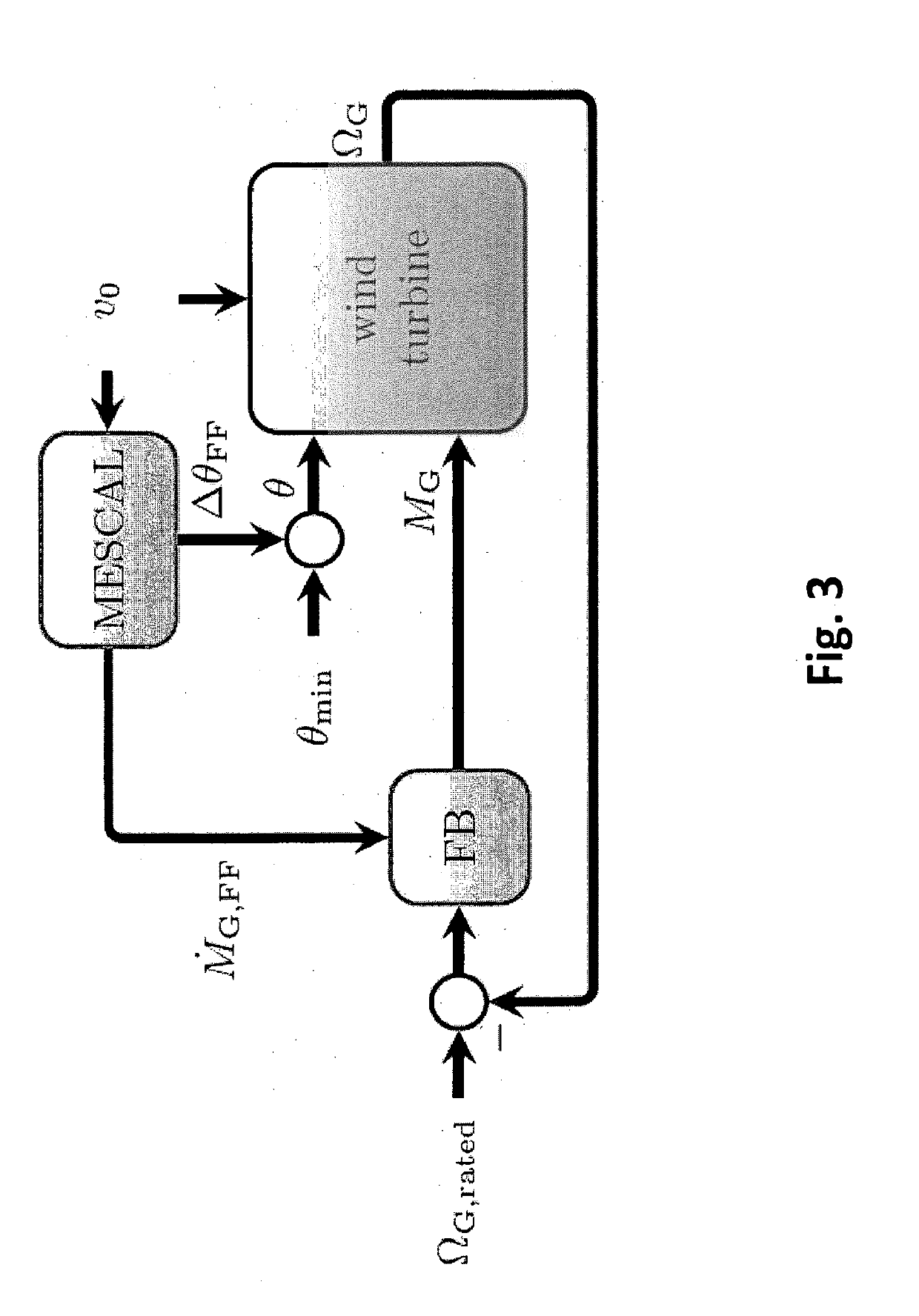Lidar-Based Multivariable Feedforward Control of Wind Turbines
a multi-variable, feedforward control technology, applied in the direction of wind energy generation, machines/engines, mechanical equipment, etc., can solve the problems of difficult tuning, negative impact on structural loads, and the replacement of feedback controllers,
- Summary
- Abstract
- Description
- Claims
- Application Information
AI Technical Summary
Benefits of technology
Problems solved by technology
Method used
Image
Examples
Embodiment Construction
[0064]I. Modeling of the Wind Turbine
[0065]In this study, a full model of a 5 MW reference turbine is used for simulations. A reduced version of the same turbine is used for the controller design.
[0066]A. Full Simulation Model
[0067]Simulations are done with the aero-elastic simulation tool FAST. In FAST, an onshore wind turbine structure is modeled by a flexible multibody system, which experiences external forces from aerodynamics. The structural model represents dynamics of flexible parts such as the tower, blades, and drive train. The following 15 degrees of freedom (DOF) are enabled in the simulations: first and second flapwise modes and first edgewise mode of three blades, first and second side-to-side and fore-aft tower bending modes, rotor motion and drive train flexibility. Two different types of wind input files can be loaded to the aerodynamic subsystem. Coherent time series of wind characteristics such as wind speed, direction, and shears are used for the extreme load calc...
PUM
 Login to View More
Login to View More Abstract
Description
Claims
Application Information
 Login to View More
Login to View More - R&D
- Intellectual Property
- Life Sciences
- Materials
- Tech Scout
- Unparalleled Data Quality
- Higher Quality Content
- 60% Fewer Hallucinations
Browse by: Latest US Patents, China's latest patents, Technical Efficacy Thesaurus, Application Domain, Technology Topic, Popular Technical Reports.
© 2025 PatSnap. All rights reserved.Legal|Privacy policy|Modern Slavery Act Transparency Statement|Sitemap|About US| Contact US: help@patsnap.com



